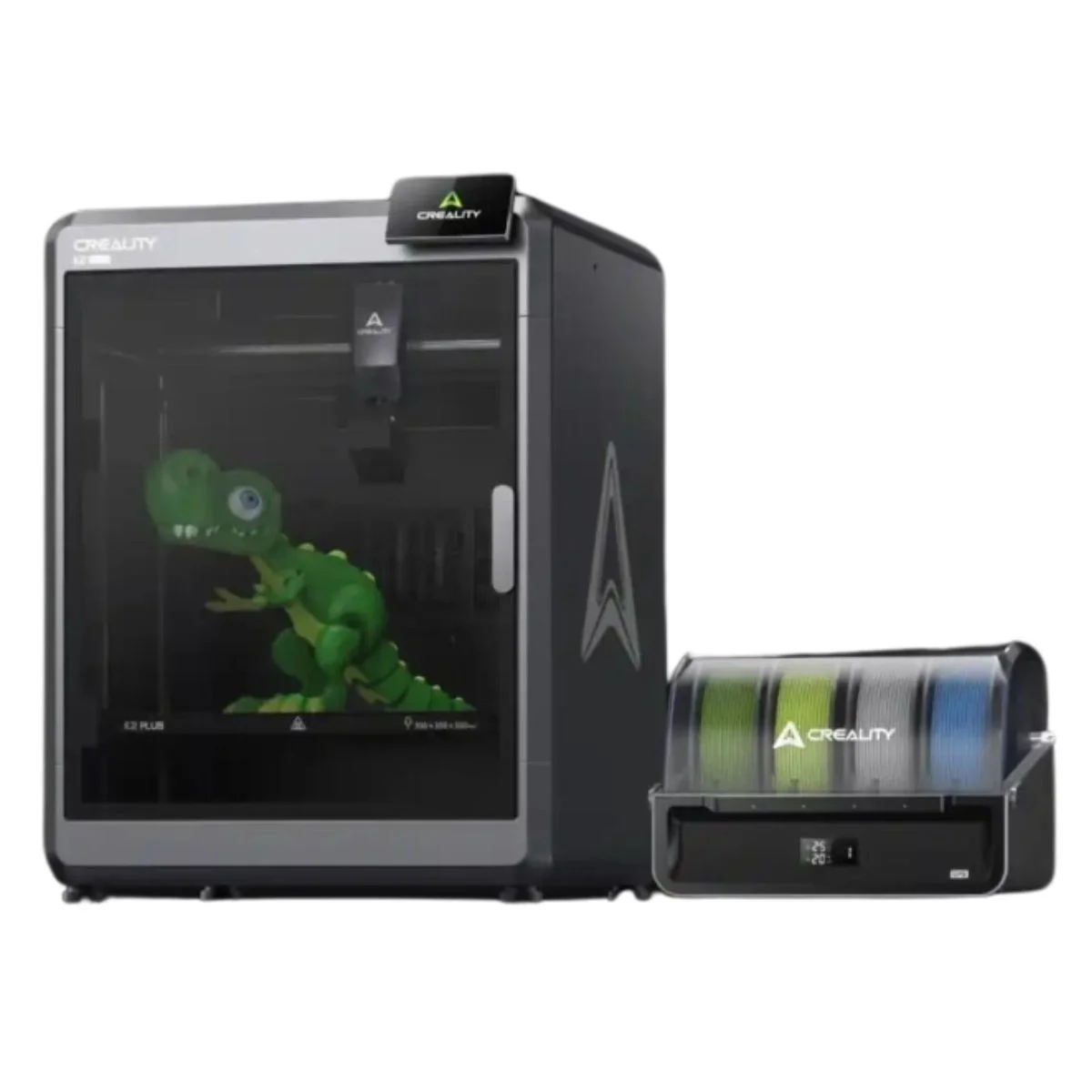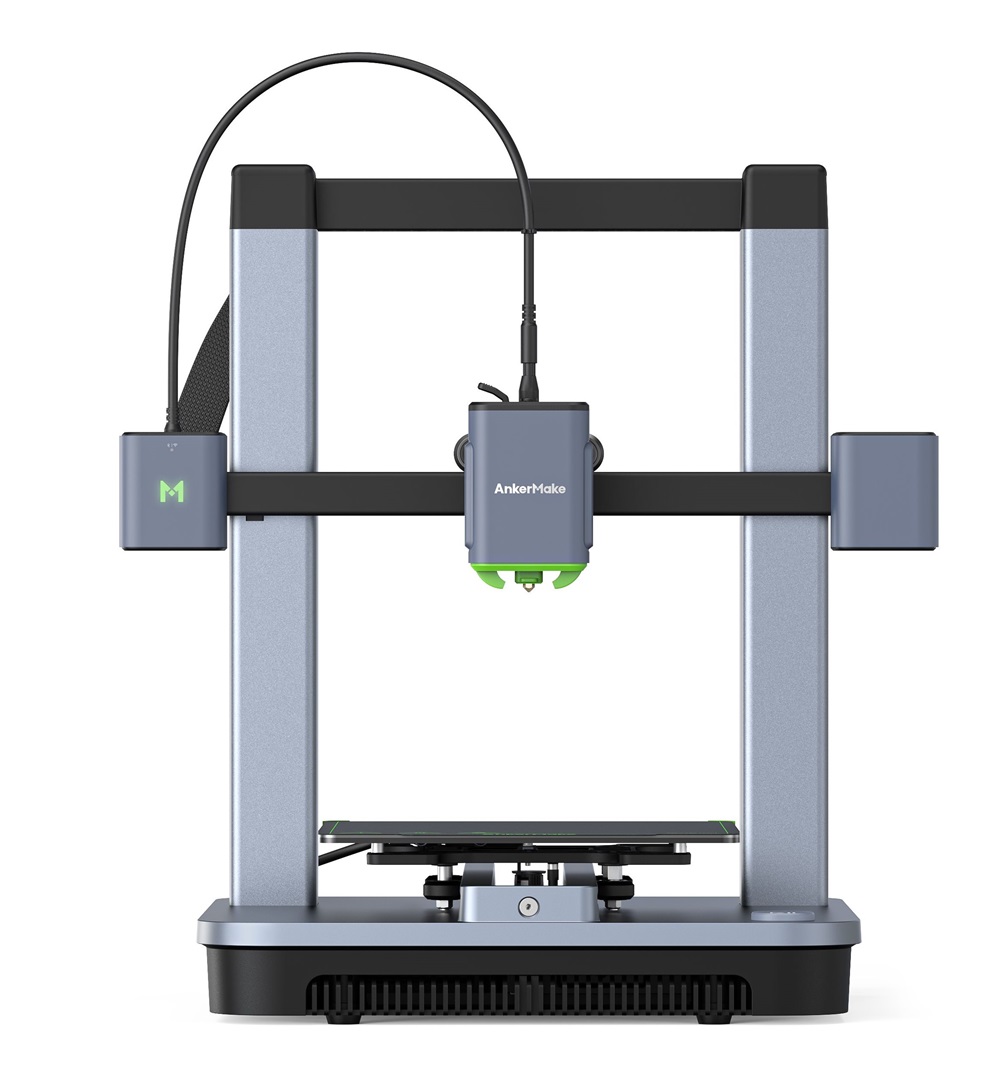Compare K2 Plus vs M5C
Comparison between the best 3D printers
Choose the best 3D printer at the best price. The cheapest 3D printers are here.
Buy a 3D printer here with 3D Fila.
 |
 |
|
| Model | K2 Plus[BUY K2 Plus] |
M5C[BUY M5C] |
| Printing Material | Filament | Filament |
| Buy Filament for Creality K2 Plus | Buy Filament forAnkerMake M5C | |
| Estimated price | $1500,00 | $399,00 |
| Manufacturer | Creality | AnkerMake |
| Release Year | 2024 | 2023 |
| Print Volume [mm] | 350x350x350 | 220x220x250 |
| Printer Size [mm] | 495x515x640 | 466x374x480 |
| Weight [kg] | 33,5 | 9,6 |
| Power Loss Recovery | YES | YES |
| Enclosed printer | YES | NO |
| Bed Leveling | Automatic | Automatic |
| Filament End Sensor | YES | YES |
| Bed type | Heated | Heated |
| Power supply system | Direct Drive | Direct Drive |
| Standard nozzle | 0,4 | 0,4 |
| Maximum Nozzle Temperature [°C] | 350 | 300 |
| Maximum Bed Temperature [°C] | 120 | 100 |
| Maximum printing speed [mm/s] | 600 | 500 |
| Filament holder | YES | YES |
| Camera for supervision | YES | YES |
| Recommended filaments | PLA, PETG, PET, TPU, PA, ASA, PC, PLA CE, PA-CF, PET-CF | PLA, PETG, TPU, ABS, PA, PLA-CF, PETG-CF, PA-CF |
| Recommended slicers | Creality Print 5, Bambu Studio, Super Slicer, Cura, Prusa Slicer, Orca Slicer | AnkerMake Studio (macOS, Windows), Simplify3D, Ultimaker Cura, PrusaSlicer |
| Maximum Resolution [mm] | 0,1 | 0,1 |
| Processor | ||
| Display | Touchscreen 4,3'' | |
| Power Supply | 1200 W | 350 W |
| Connectivity | USB / WIfi | Wi-Fi, USB-C, Bluetooth |
| Operating systems | Windows, Linux, Macbook | Windows, Linux e Macbook |
| Date of registration in the system | 2024-06-26 | 2024-09-11 |
| Release date | 2024 | 2023 |
| Extra features | The Creality K2 Plus 3D Printer stands out for its multicolor printing, large build volume (350x350x350 mm) and Apus Direct Drive extruder with tri-metal protection nozzle. It features automatic anti-tilt leveling, FOC closed-loop motors and active chamber heating. In addition, it has an intelligent CFS filament management system, cameras for calibration and monitoring, a 4.3-inch touchscreen and advanced sensors to optimize the printing process. | The AnkerMake M5 printer stands out for its impressive print speed, reaching up to 500mm/s. It features AI print monitoring, an integrated camera for creating timelapses, auto-leveling bed with pressure sensor, direct extruder, flexible PEI-coated build plate, and Wi-Fi and USB-C connectivity. Assembly is quick and easy, and the printer is designed to deliver high print quality and ease of use. |
| Support for multiple colors and materials (AMS and CFS) | YES | NO |
Notes * |
||
| Cost-benefit | 7 / 10 | 7 / 10 |
| Hardware | 7.2 / 10 | 3.2 / 10 |
| Tela | . | . |
| Print volume | 4 / 10 | 3 / 10 |
| Performance | 5 / 10 | 4 / 10 |
| [BUY K2 Plus] | [BUY M5C] |
Conclusion |
| In comparing the Creality K2 Plus and the AnkerMake M5C 3D printers, several key factors emerge that potential buyers should consider. The K2 Plus is a more advanced model, geared towards users needing extensive print capabilities and supporting a wider array of materials. Its larger print volume, superior maximum temperature ratings, and advanced features such as multicolor printing and enhanced chamber heating make it suitable for serious enthusiasts and professionals looking for versatility and performance. The printer also benefits from a robust set of sensors and a user-friendly touchscreen interface, which contribute to a more seamless printing experience. On the other hand, the AnkerMake M5C is a budget-friendly option that excels in speed and ease of use. Its quick setup and impressive printing speeds make it a great choice for entry-level users or those who prioritize fast turnaround times without compromising on quality for standard materials. Additionally, its lightweight design and compact structure make it an attractive option for users with limited workspace. While the K2 Plus commands a higher price, it offers substantial additional features and capabilities, while the M5C provides excellent value, combining affordability with solid performance. Ultimately, the decision should hinge on the specific needs of the user—whether they seek advanced functionality and larger prints or prioritize speed and simplicity at a lower cost. Each printer carries its strengths that cater to differing demands, making both worthy contenders in the 3D printing market. |

